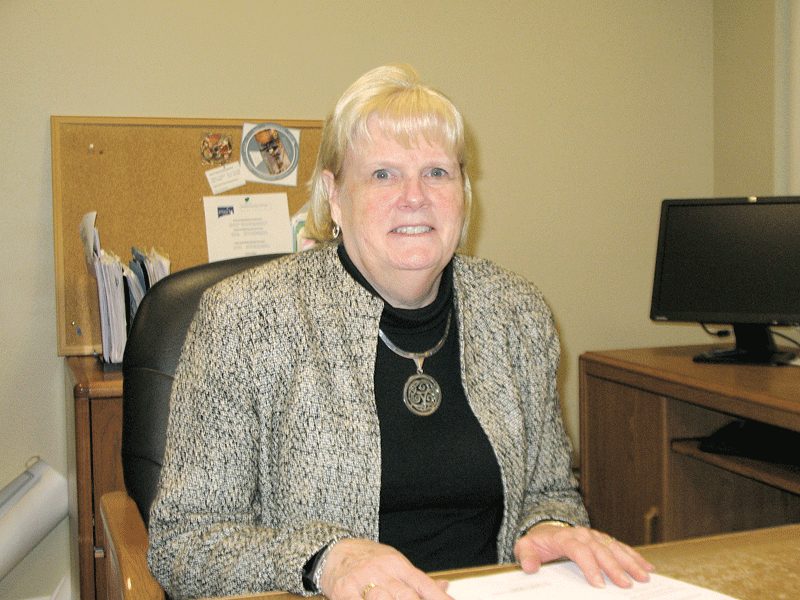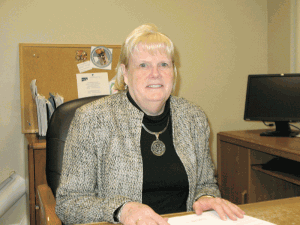
Life Lessons
Managing Different Generations Takes Insight, Sensitivity

Meredith Wise says understanding how employees from different generations are motivated and communicate is one key to managing a diverse workforce.
Staff meeting or e-mail?
It’s a simple question, but when posed to employees from different generations, it can turn into a thorny issue in the modern office.
Meredith Wise, president of the Employers Assoc. of the NorthEast, recalled talking to an older manager, from the Baby Boom generation, who was confounded by the casual way Gen-Xers preferred to have dialogue.
“He said, ‘I really don’t feel like I’m doing an effective job of managing, and I’m not giving them the respect they need, if I just send an e-mail or text. I want to sit down and talk with them, but that’s not what that person wants,’” she explained. “It’s hard when you have these differences.”
The opposite is also true, Wise added. “When a younger manager comes in and tries to manage Baby Boomers, they want that face time, they want to sit down and talk, but the Gen-Xer just wants to shoot off messages — ‘you’re doing a great job, Joe, thanks,’ or ‘Joe, I need you to correct this report’ — and the Baby Boomers think that’s not appropriate. It really works both ways.”
Differences in the work styles and priorities of each generation pose a number of challenges for managers. For instance, Generation X workers have come through the ranks with a desire for independence and flexibility not nearly as prevalent among their forebears.
But not every office is equipped to handle flex time, said Joe Ascioti, president of Reliable Temps; a good example is the many manufacturing companies he counts among his clientele.
“It has to work for both the employer and the employee,” he said. “There has to be flexibility from both sides. There seems to be a little, ‘why can’t you do that?’ from employees, when, in some cases, you can’t be flexible.”
In this issue, BusinessWest discusses the characteristics (and, in some cases, stereotypes) that define the four generations now in the workplace, and why their differences can be frustrating to align under one roof.
Connect Four
Though every generation is comprised of individuals with very specific traits, certain characteristics have come to define each group in the workplace. According to the American Management Assoc., they include the following.
The Silent Generation (born between 1925 and 1946), also known as the Traditionalists, has produced perhaps the most loyal and highly dedicated workers, as well as the most risk-averse. Their values were shaped by the Great Depression, World War II, and the postwar boom years. They are committed to teamwork and collaboration, and value interpersonal communications skills.
Baby Boomers (1946 to 1964) are the first generation to actively declare a higher priority for work over personal life. They generally distrust authority and large systems. Their values were shaped primarily by a rise in civil rights activism, Vietnam, and inflation. They are more optimistic and open to change than the prior generation, but they also have a reputation for pursuing personal gratification first.
Members of Generation X (1965 to 1980), often considered the ‘slacker’ generation, tend to question authority figures and are responsible for creating the work/life balance concept, valuing personal time away from work more highly than climbing the career ladder. They possesses strong technical skills and are more independent than prior generations. They also tend to be very adaptive to job instability in the shrinking job market.
Millennials, or Generation Y (born after 1980), comprise the first global-centric generation, having come of age during the rapid growth of the Internet and an increase in global terrorism. They are among the most resilient in navigating change while deepening their appreciation for diversity and inclusion. They’re the most educated generation of workers today, as well as the most team-centric, having been raised by parents who carefully programmed much of their lives with sports, music, and recreational activities. They’ve inherited their Boomer parents’ desire to work hard and set goals, but can also appear more demanding — some would say entitled — than previous generations.
Work styles can vary wildly between these groups, particularly when it comes to collaboration, Wise explained. “Millennials in particular work very well in team settings; they’re very good at attacking problems on a team basis. When a group of them need to work together on something, they do a great job of assigning roles as a team and turning out a great project.”
She added, however, that these personal differences shouldn’t obscure some basic managerial keys that apply to all employees.
“There are some things that cut across all generations — the basics of managing and motivating people, things like showing respect for them, listening to their suggestions and thoughts, and making them feel valued by the organization,” Wise said.
But even those basics can be tweaked depending on one’s office culture. Take, for example, the issue of motivation.
The Silents have always desired personal acknowledgment and compensation for a job well done, and value tangible symbols of loyalty, commitment, and service, Wise explained. Many have spent their entire careers with one company.
Boomers, on the other hand, are more likely to crave public acknowledgement and career advancement for their accomplishments. They also want to feel like they’re making a difference in their workplace or industry. Gen X, however, represents a shift in priorities from the previous two generations.
“The Gen-Xers are kind of caught in the middle, and really, one of the key motivators for them is that they want more free time,” Wise said. “Instead of climbing up the ladder for more money, they want more flexibility in their work schedule.” They also value autonomy at work, and will trade compensation for independence, schedule flexibility, and time off.
Millennials, like their Boomer parents, also crave public recognition of their achievements, but they’re far more likely to accept that praise as a group, she explained.
“The Baby Boomer wants to be singled out — ‘Joe, you did a wonderful job. Thank you; here’s your reward’ — while Gen-Xers and especially Gen-Ys are more likely to be on teams and are perfectly happy hearing, ‘you guys did great,’” Wise said.
Building an Image
Millennials, however, still battle the perception that they’re entitled to achieve their goals — which bumps up against the reality that many are leaving college unable to procure jobs in their chosen fields (see story, page 26), leading to widespread disillusionment.
“It’s a mentality of, ‘you’ll pay me, then I’ll do this,’” Ascioti said. “Wait a minute here — that’s not the way it works. I offer you a salary, you accept it, and you come in and show me what you can do.”
Setting out unrealistic demands makes it difficult to match career seekers with available jobs, he said.
“I’ve heard this from employers we service and some friends who own businesses — everyone they run into says, ‘you guys must have tons of people’” applying for jobs, Ascioti said.
“Now, we do have a good supply of applicants. But a person comes in, fills out an application, we interview them, go through the whole thing with them — what shift, what area — then we call them at home and say, ‘Jimmy, we have this job at XYZ client; it’s second shift, and it pays X an hour. The company is looking to hire you on a permanent basis; once your contract with us is up, they are looking to hire you.’ And there’s a pause on the phone, and the person says, ‘no, I’ll stay on unemployment.’
“It’s starting to affect our business,” he continued. “People sense that there’s this unending expansion of unemployment. It’s a very interesting phenomenon, and I hear it from a lot of people. You say to them, ‘this may not be perfect right now,’ but they’re waiting for that perfect job.”
In the workplace, however — particularly in a job they find fulfilling — Millennials have also built a reputation for working hard, multitasking effortlessly, and keeping their options open. They crave opportunities to broaden their skills, which managers can use to their mutual advantage, Wise said.
“With Millennials, it’s ‘let’s give you opportunities to train in this area, to send you to this program to enhance your skills and capabilities.’ They’re looking for new opportunities to grow and develop,” she explained.
And, of course, sometimes they don’t have the time or patience to talk about their progress outside of a quick e-mail.
“Baby Boomers want you to sit down and listen to them, to let them expound and give you their thoughts,” Wise said. “They want to have face-to-face conversations, but Gen-Xers and Millennials want to do something quickly. When they want face time, they want it very focused, very quick, and they would just as often have you do it electronically.”
That sometimes makes Baby Boomers, especially those not as savvy with the high-tech world, uncomfortable. “To manage that way can feel very weird and just not as effective for them,” she said.
Which is why that simple question — staff meeting or e-mail? — is actually not that simple at all.
Joseph Bednar can be reached at [email protected]






